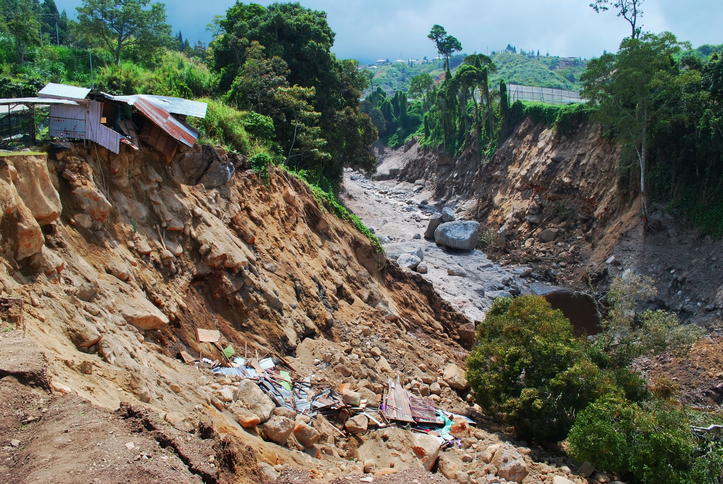What You Need to Know About Landslides

Landslides don’t make the news unless they’re sweeping away buildings and people, but they’re a lot more common than you may realize. Every state has landslide areas, and since they’re rarely in developed areas, you’ll probably come across them when exploring on your XTV. Here’s how you can identify possible landslide areas, avoid them, and, if necessary, escape them.
“Safer” Doesn’t Mean “Safe”
Argo XTVs are used by search and rescue operations the world over for rescuing people trapped in landslides. With trained operators and the right equipment, these vehicles can make traveling in these dangerous areas safer, but by no means does it make it safe for casual operators to explore areas with unstable soil. For your safety, you should use your XTV’s abilities to escape landslide areas, not drive into them.
What Causes a Landslide?
A landslide is simply the movement of earth down a slope caused by gravitational force being higher than the friction holding the soil together. This movement can be small or large, fast or slow. These are triggered by a combination of factors: soil can be loosened by seismic activity, heavy rains or erosion while removing support or increasing loads through construction can upset the balance between friction and gravity.
Landslides occur in every state. Around here, they most commonly occur in the Alleghenies near Pittsburgh and almost any area in West Virginia near a stream or a former strip mining site.
Identifying Possible Landslide Areas
If there has been a landslide in the area, it can happen again. Plan ahead to avoid areas where slides have occurred. Keep an eye out for these signs of an impending slide:
– Linear cracks and bulges appearing along hillsides
– Trees, telephone poles, and fences will lean or shift position.
– Streams and rivers can have a sudden increase or decrease in flow, or the water suddenly becomes turbid.
– Mud, falling rocks, and cracking or collapsed pavement suddenly appears
– Sounds of trees cracking or rocks knocking together
If you spot any of these, leave the area immediately.
Seismic activity and intense, short storms can be enough to tip the balance, triggering a landslide. It won’t always happen instantly: the effects of this unsettling can take hours or days before it causes the ground to collapse.
A landslide can have a knock-on effect. As soil is removed by the initial landslide, the lack of support can cause the surrounding soil to slide, resulting in additional landslides. While you may think you’re out of harm’s way, it’s better to put as much space between you and the collapsed area.
Escaping in Your XTV
An XTV’s ground pressure is lighter than a human foot, making it safer for traveling across landslide areas. Stay in your vehicle and drive out of the area. The hazard is greatest at the base of a hill where the debris will collect. Where practical, drive across the slope instead of straight down.
Stay away from water. Bridges can be washed away, while waterways can experience sudden increases in flow that can drag your vehicle with it.
If you get stuck, curl up in a ball and protect your head. Emergency services usually equip their vehicles with ROPS to protect passengers if the vehicle is rolled over by sliding soil and debris.
What to Do After a Landslide
Contacting emergency services. They can assess the danger, help with injuries and send information about the landslide to the state geologic association.
Get Equipped for Adventure
Shank’s Argo is one of the largest dealers in the East, and we’ve helped amateurs and professionals with their outdoor equipment for over three decades. We can find the XTV and equipment for your needs, whether you’re looking for some weekend fund or need a rescue vehicle for remote areas. Visit our showroom or our website to schedule a test drive at 4900 Molly Pitcher Highway in Chambersburg, PA. That’s one mile east of I-81 from Exit 10.
